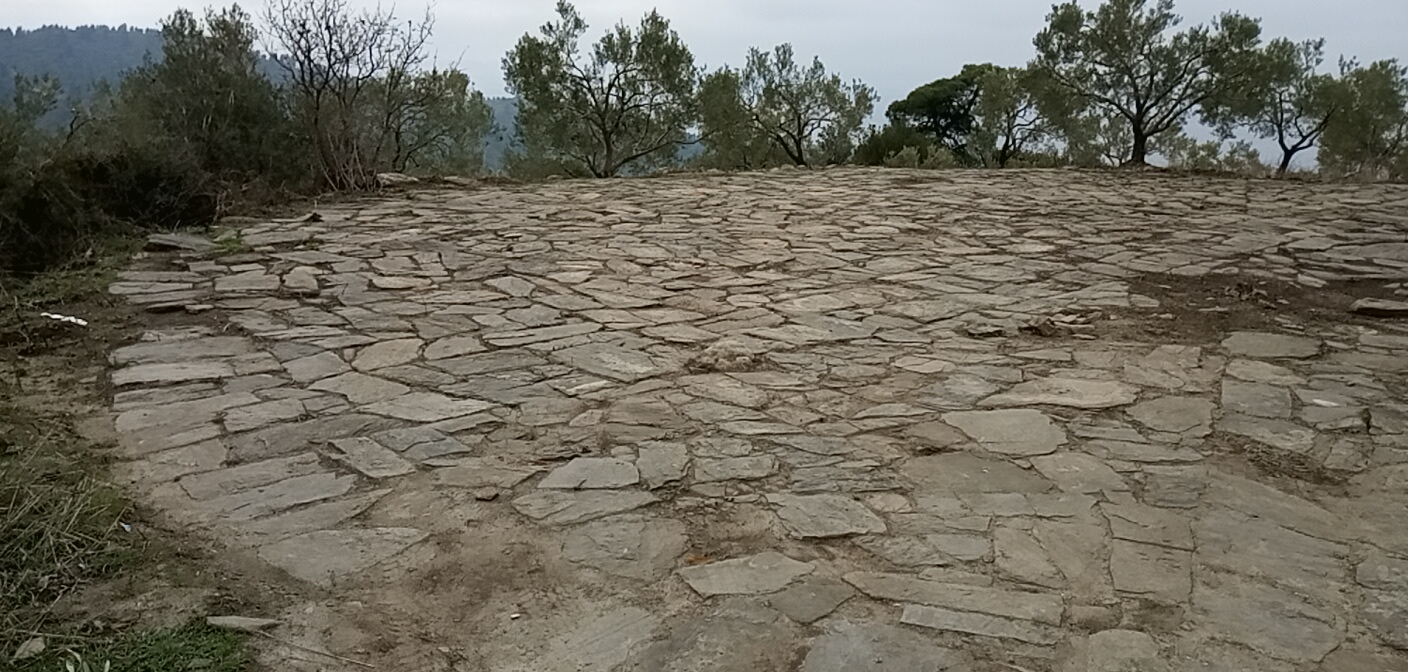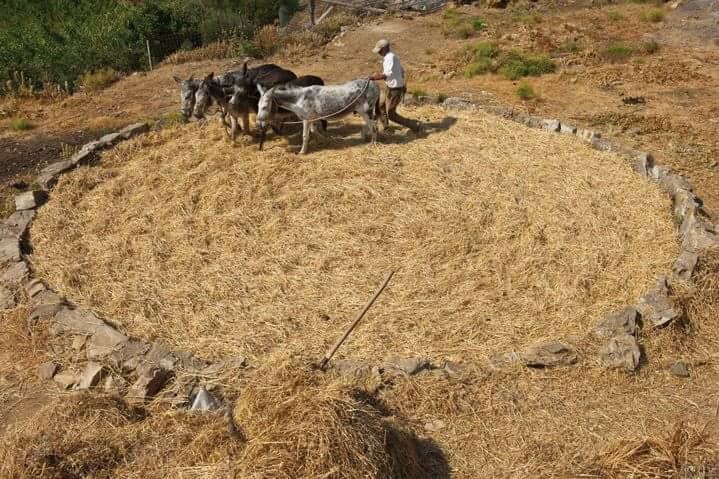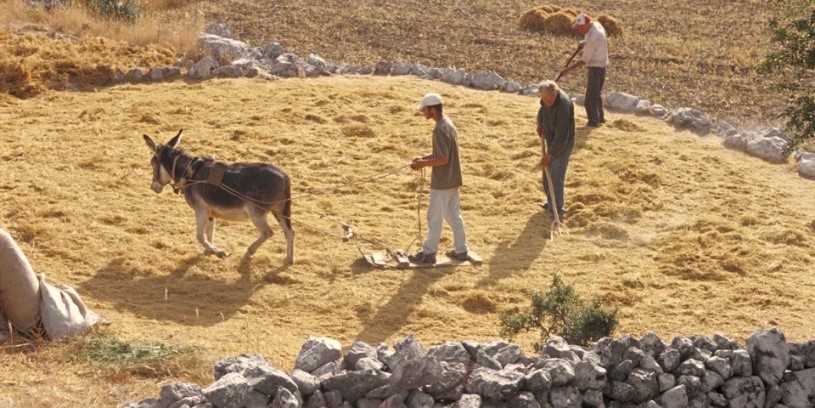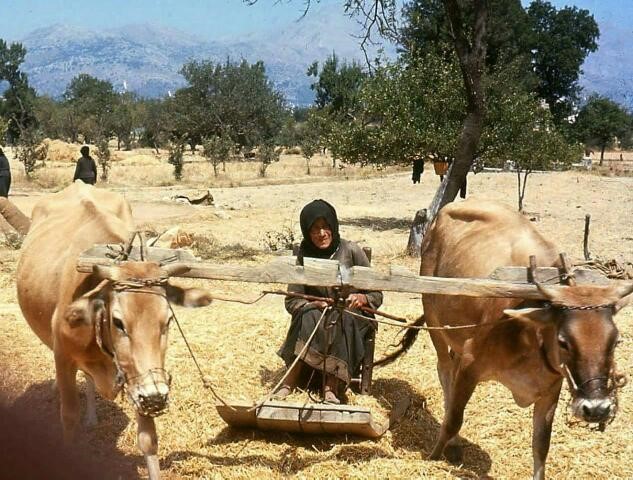
Threshing Floor- Threshing





The threshing floor is a circular flat area used for separation cereals (wheat, barley, etc.). The threshing floors were built in open places, hills or ravines, in places where strong wind blows and helps in the threshing.
In the center of the threshing floor there was a thick solid wood, usually made of holly, called or sticheros, deep into the soil. A thick rope of horsehair was tied on it. It was as long as the radius of the circle of the threshing floor. In the case that two horses or oxen were working, two horsehairs were tied on sticheros.
The threshing took place in July (Alonaris), on sunny days until 5 in the afternoon, so that the wheat bundles are dry and easy to break.
They filled the whole area of the threshing floor with bundles of wheat. They put 1 to 2 horses or oxen on a hook that each horse had around his neck.
The animals with the help of the thresher walked in a circle in the threshing floor and the weight of their legs broke the grain. Many times, in order for the threshing to be more effective, they used the volosyros, a wooden harrow, a little narrower at the front and a little elevated so that it could roll more easily on the sheaves, while below there were sharp nailed stones or teeth sharpened by iron blades. The thresher standing on the volosyros guided the animals and with its weight pressed the volosyros for better threshing. With the forks, the threshers turned the reed again and again, so that it turned into fine straw.
At sunset, as soon as the first blow of the age began, the lychnisma took place. That is, they threw the straw-wheat mixture high with special karpologia. The wind swept the straw away and let the wheat seeds fall into the threshing floor.
The women then sifted the pile of wheat with a large thin sieve to remove any straw that remained on the sieve while the pure wheat was falling down.
Then the wheat was put in the barns of the house, ready for grinding and the straw was used as animal feed.
